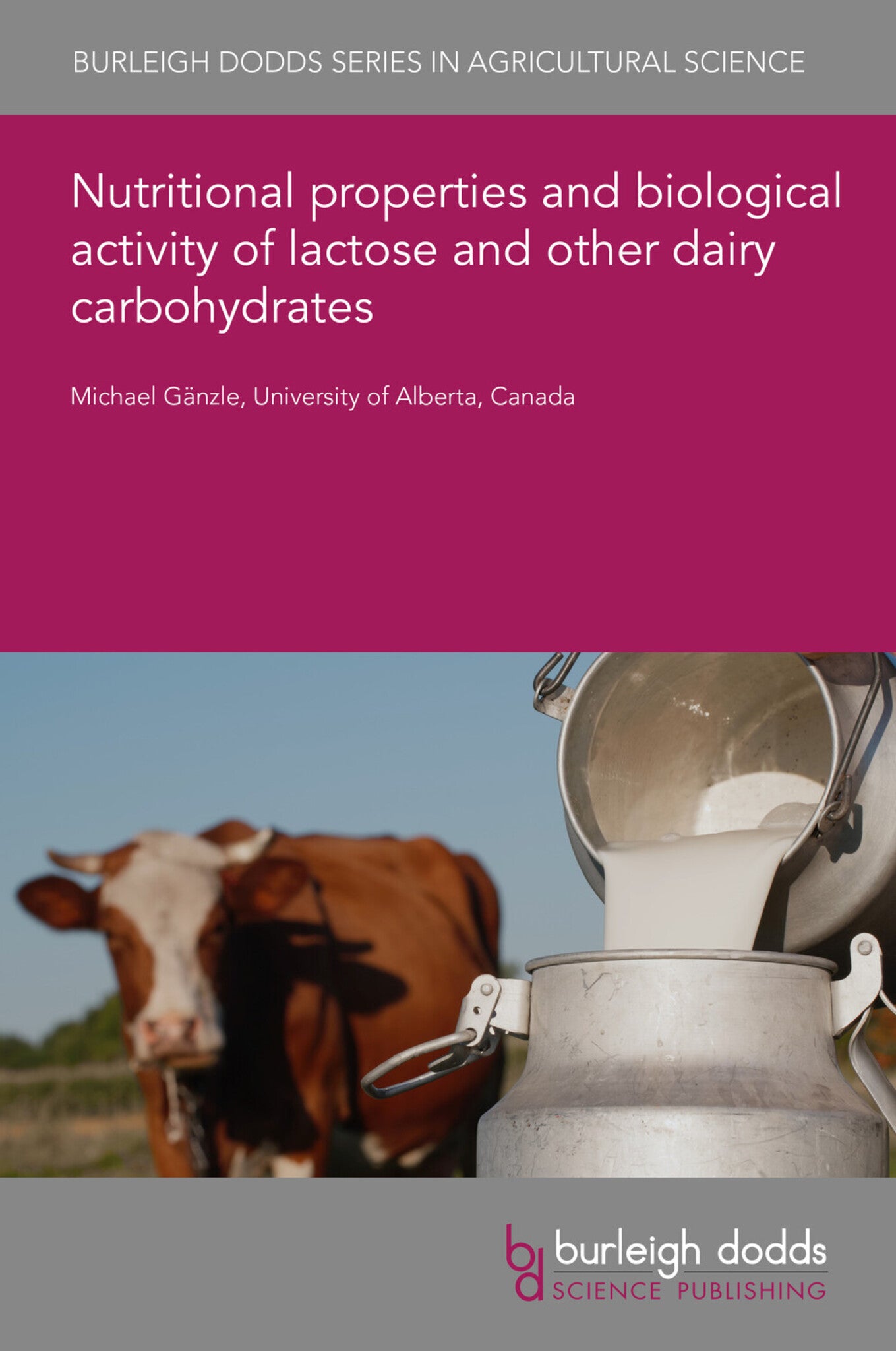We're sorry. An error has occurred
Please cancel or retry.
Nutritional properties and biological activity of lactose and other dairy carbohydrates
Regular price
£25.00
Sale price
£25.00
Regular price
£25.00
Unit price
/
per
Sale
Sold out
Re-stocking soon
Lactose is the main carbohydrate in the milk of dairy animals; it is also the only dairy carbohydrate that is digested in the human small intestine. While lactose is digested by all human infants, ...
Read More

Some error occured while loading the Quick View. Please close the Quick View and try reloading the page.
Couldn't load pickup availability
- Format:
-
14 March 2022

Lactose is the main carbohydrate in the milk of dairy animals; it is also the only dairy carbohydrate that is digested in the human small intestine. While lactose is digested by all human infants, it is conditionally digestible in human adults and its nutritional properties depend on the genetic background of the individual, the capacity of intestinal microbiota to ferment lactose without adverse effects for the host, and the presence of other components of the diet. In addition to lactose, milk of dairy animals contains glycoproteins and a low concentration free oligosaccharides. These dairy carbohydrates are indigestible but have multiple biological activities related to infant nutrition, the modulation of the composition and activity of intestinal microbiota, and the inhibition of pathogen or toxin adhesion to intestinal epithelia. This chapter provides an overview on carbohydrates and glycoproteins in milk, focusing on bovine milk, and their nutritional properties and biological activity.

Price: £25.00
Publisher: Burleigh Dodds Science Publishing
Imprint: Burleigh Dodds Science Publishing
Series: Burleigh Dodds Series in Agricultural Science
Publication Date:
14 March 2022
ISBN: 9781801464420
Format: eBook
BISACs:
TECHNOLOGY & ENGINEERING / Agriculture / Animal Husbandry, Dairy farming, TECHNOLOGY & ENGINEERING / Agriculture / Sustainable Agriculture, Sustainable agriculture, Animal husbandry

1 Introduction 2 Lactose 3 Galacto-oligosaccharides 4 Glycosylated proteins: lactoferrin, κ-casein and the caseinmacropeptide 5 Bovine milk oligosaccharides 6 Conclusion 7 Where to look for further information 8 Acknowledgements 9 References



